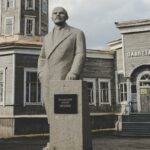Brief Overview of the Galapagos Islands
The Galapagos Islands, an archipelago of volcanic islands situated in the Pacific Ocean, are renowned for their unique biodiversity and the scientific explorations of Charles Darwin that led to his theory of evolution. However, beyond the captivating wildlife and scenic landscapes, there lies a rich tapestry of human history and ethnicity that is equally fascinating.
Importance of Understanding Ethnicity in Galapagos
Understanding the ethnic composition of the Galapagos Islands is crucial for several reasons. It sheds light on the historical events that have shaped the islands, influences the social dynamics, and plays a significant role in the management and conservation of the islands’ natural resources.
The Ethnicity of Galapagos: A Closer Look
Predominance of Ecuadorian Mestizos
The ethnic composition of the Galapagos Islands is predominantly Mestizo, a term used in Latin America to describe people of mixed European and Indigenous American descent. This ethnic group accounts for approximately 70% of the population in the Galapagos, reflecting the broader demographic trends in Ecuador.
The Historical Context of Ethnicity in Galapagos
The ethnic composition of the Galapagos Islands is a testament to the historical events that have unfolded over centuries. From the arrival of the Spanish colonists to the waves of migration from mainland Ecuador, each event has left an indelible mark on the islands’ ethnic landscape.
The Spanish Colonists: Their Influence and Legacy
Arrival of the Spanish Colonists
The Spanish colonists were the first Europeans to arrive in the Galapagos Islands in the 16th century. Their arrival marked the beginning of a new era in the islands’ history, characterized by cultural exchange, intermarriage, and the emergence of a new ethnic group – the Mestizos.
Interactions with the Native Americans
Unlike other parts of the Americas, the Galapagos Islands did not have a significant indigenous population at the time of the Spanish arrival. Therefore, the interactions between the Spanish colonists and Native Americans were limited, and the ethnic landscape was primarily shaped by the colonists and later migrants.
The Emergence of the Mestizo Ethnic Group
The Mestizo ethnic group emerged as a result of intermarriage between the Spanish colonists and the Native Americans from mainland Ecuador. Over time, this group became the dominant ethnic group in the Galapagos Islands, shaping the islands’ culture, traditions, and social dynamics.
Indigenous Native Americans: The Original Inhabitants
The Native American Presence in Ecuador
While the Galapagos Islands did not have a significant indigenous population, mainland Ecuador was home to several Native American groups. These groups, including the Quechua and Shuar, have a rich cultural heritage and have significantly influenced Ecuador’s ethnic composition.
The Absence of an Indigenous Population in Galapagos
The absence of an indigenous population in the Galapagos Islands is a unique aspect of its ethnic composition. This absence can be attributed to the islands’ remote location and harsh living conditions, which may have deterred permanent settlement by indigenous groups.
The Unique Demographics of the Galapagos Islands
Population Composition and Distribution
The population of the Galapagos Islands is relatively small, with around 25,000 inhabitants. The majority of the population is concentrated in the islands of Santa Cruz and San Cristobal, which offer better infrastructure and economic opportunities.
Impact of Migration on Ethnic Composition
Migration from mainland Ecuador has significantly influenced the ethnic composition of the Galapagos Islands. The influx of migrants, primarily Mestizos, has led to a gradual increase in the islands’ population and has further solidified the dominance of the Mestizo ethnic group.
The Influence of Ethnicity on Galapagos Culture
The Fusion of Spanish and Native American Cultures
The Mestizo culture in the Galapagos Islands is a fusion of Spanish and Native American cultures. This fusion is evident in various aspects of island life, including language, food, music, and festivals.
Unique Cultural Practices and Traditions
Despite the dominance of the Mestizo culture, the Galapagos Islands have unique cultural practices and traditions. These include the celebration of the islands’ natural heritage, a strong sense of community, and a deep respect for the environment.
Current Trends in Galapagos Ethnicity
Changes in Ethnic Composition Over Time
While the Mestizo ethnic group continues to dominate, the ethnic composition of the Galapagos Islands has evolved over time. This evolution reflects the changing migration patterns, intermarriage, and the influence of global trends.
The Role of Immigration in Shaping Ethnicity
Immigration continues to play a significant role in shaping the ethnic composition of the Galapagos Islands. Recent immigrants from other parts of Ecuador and the world bring new cultural influences, contributing to the islands’ ethnic diversity.
The Role of Ethnicity in Galapagos Society
Ethnicity and Social Structure
Ethnicity plays a crucial role in the social structure of the Galapagos Islands. While the society is relatively homogeneous due to the dominance of the Mestizo ethnic group, there are subtle differences in social status, economic opportunities, and cultural practices.
Ethnicity and Economic Opportunities
The economic opportunities in the Galapagos Islands are closely tied to ethnicity. The Mestizo population, being the majority, has better access to economic opportunities, while recent immigrants often face challenges in securing employment and resources.
Ethnicity and Conservation in Galapagos
The Relationship Between Ethnicity and Environmental Stewardship
The ethnic composition of the Galapagos Islands influences environmental stewardship. The Mestizo population, with its deep-rooted respect for the environment, plays a crucial role in conservation efforts.
Ethnicity and the Management of Natural Resources
The management of natural resources in the Galapagos Islands is also influenced by ethnicity. The Mestizo population, with its traditional knowledge and practices, contributes to sustainable resource management.
Conclusion
Recap of the Ethnic Composition of Galapagos
The ethnic composition of the Galapagos Islands is a fascinating blend of historical influences, migration patterns, and cultural fusion. Dominated by the Mestizo ethnic group, the islands’ ethnicity reflects the broader demographic trends in Ecuador and the unique circumstances of the islands.
The Future of Ethnicity in Galapagos
As the Galapagos Islands continue to evolve, so too will its ethnic composition. Immigration, intermarriage, and global influences will continue to shape the islands’ ethnicity, adding new layers to its rich tapestry.
Frequently Asked Questions
What is the dominant ethnic group in the Galapagos Islands?
The dominant ethnic group in the Galapagos Islands is the Mestizos, people of mixed European and Indigenous American descent.
Why is there no indigenous population in the Galapagos Islands?
The absence of an indigenous population in the Galapagos Islands can be attributed to the islands’ remote location and harsh living conditions, which may have deterred permanent settlement by indigenous groups.
How has migration influenced the ethnic composition of the Galapagos Islands?
Migration from mainland Ecuador has significantly influenced the ethnic composition of the Galapagos Islands. The influx of migrants, primarily Mestizos, has led to a gradual increase in the islands’ population and has further solidified the dominance of the Mestizo ethnic group.
What is the role of ethnicity in the Galapagos Islands’ society?
Ethnicity plays a crucial role in the social structure of the Galapagos Islands. It influences social status, economic opportunities, cultural practices, and the management of natural resources.
How does ethnicity influence environmental stewardship in the Galapagos Islands?
The ethnic composition of the Galapagos Islands influences environmental stewardship. The Mestizo population, with its deep-rooted respect for the environment, plays a crucial role in conservation efforts.
What is the future of ethnicity in the Galapagos Islands?
As the Galapagos Islands continue to evolve, so too will its ethnic composition. Immigration, intermarriage, and global influences will continue to shape the islands’ ethnicity, adding new layers to its rich tapestry.
References:
- Galapagos Conservancy. (n.d.). Human History. Retrieved from https://www.galapagos.org/about_galapagos/about-galapagos/history/human/
- Grenier, C. (2007). Conservation versus extraction in the Galapagos: A literature review. Journal of Ecological Anthropology, 11(1), 50-67.
- Quiroga, D. (2009). Crafted Images and Floating Signs: The Politics of Ethnicity in the Galapagos Islands. Journal of Latin American and Caribbean Anthropology, 14(2), 394-421.








